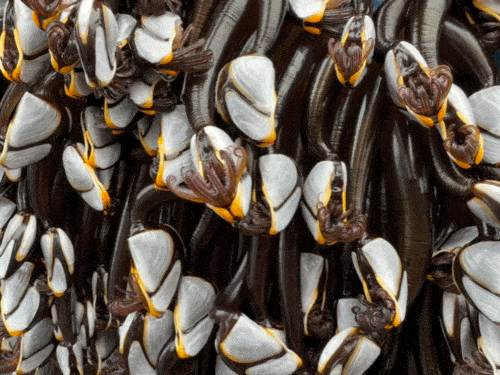Recovery
Recovery of Washington Offshore Profiler buoy
In an earlier post we explored a bit of what it takes to deploy a mooring and its related parts, but that is only one-half of the operation. For each mooring or profiler that gets deployed, a different one must be picked up and recovered. OOI operates the Coastal Endurance Array on a 6-month schedule. Every 6-months each piece of equipment that has been deployed along the array is replaced and the old one brought on board the ship to be taken back to OOI’s facility in Corvallis, OR. There the equipment is inspected and refurbished and replaced in preparation for its next half-year stint in the Pacific.
Recovery operations tend to be longer and messier than the deployment phase. Dealing with potentially hundreds of meters of cables, hoses, and line means you must be careful as you bring equipment to the surface and aboard the ship. Execute the operation wrong and you can end up with line or cable in the screws of the ship.
A sea lion upon its throne
As equipment is brought onto the deck of the ship, the real fun begins as we get to see what ocean life has decided to call the OOI equipment home for the last six months. On the surface it is very common for sea lions (Eumetopias jubatus and Zalophus californianus) to call the buoys home, and unfortunately also call it their bathroom.
Goose barnacles summoning Cthulu
Under the surface, the buoy and NSIF (Near Surface Instrument frame), which sits 8 meters below the buoy, become the home to a menagerie of barnacles (Policipes polymerus and Balanus glandula mainly), mussels (Mytilus edulis and Mytilus californianus), and a large amount of bryozoa and algae.
The most interesting (read: creepy) of the organisms that call the equipment home are the caprellids or skeleton shrimp (Caprellidae). These crustaceans cling to the equipment and sway forward and back raising and lowering their claws (called gnathopods). It is a bizarre and alien site.
This collection of biota is referred to as biofouling and must be removed from the equipment and instruments. Removal requires a lot of manual labor scraping and pulling the organisms away. It is messy, slimy, smelly work.
OOI barnacle removal specialists ply their trade




